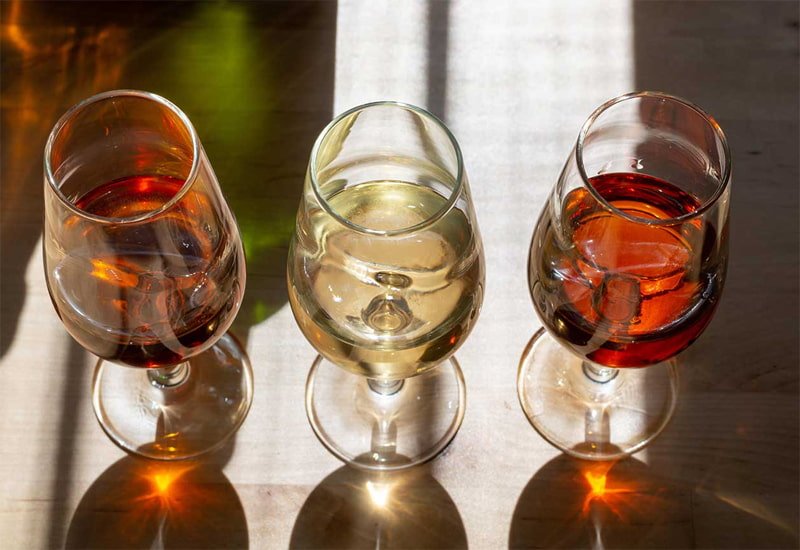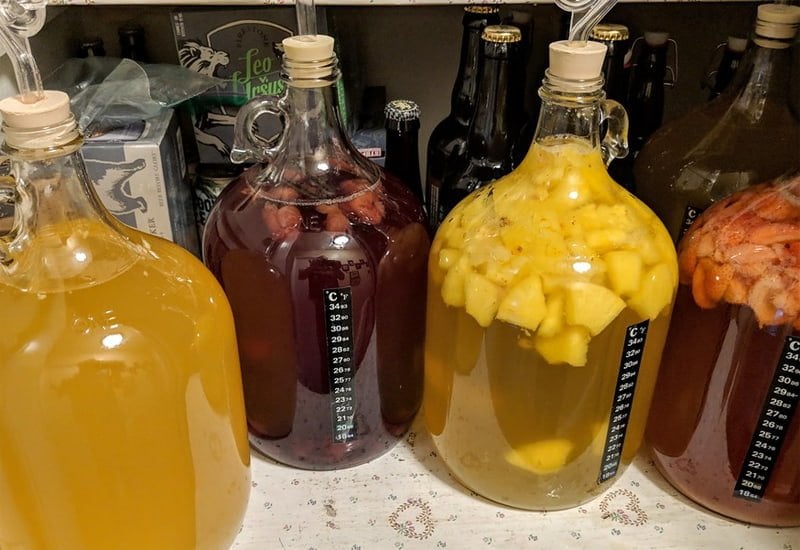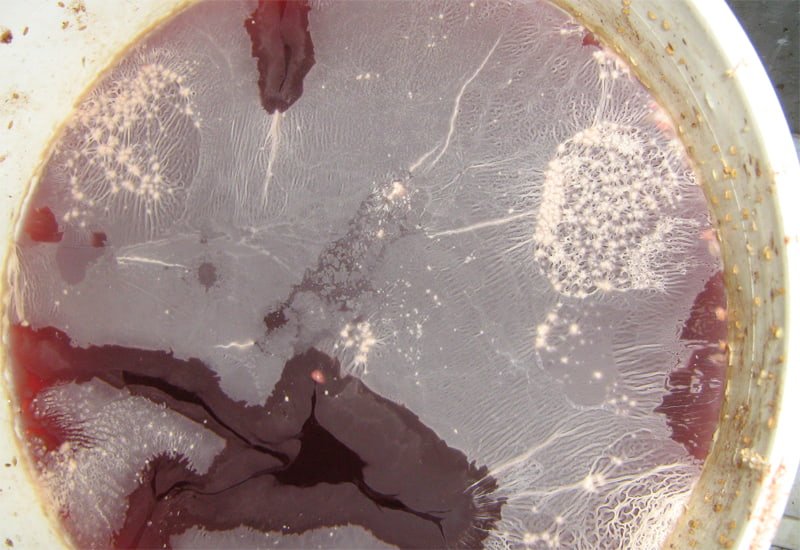How To Tell If Wine Is Bad: 6 Tell-Tale Signs
Generally, if a bottle of wine has been open for more than a week, it’s probably gone bad. But that isn’t always the case.
Certain bottles, like fortified wine and dessert wine, may last longer, and other wines may spoil in less than a week after opening.
Now, some bottles may be spoiled even before opening. So it’s important that you’re able to recognize the signs of faulty wine.
So how can you tell if wine is bad for sure?
Read on.
Further reading
- Want a delicious Cabernet Sauvignon or Pinot Noir? Check out this Guide to Red Wine.
- Also, explore the enticing world of White Wine, including Best Wines and Prices.
How To Tell If Wine Is Bad: 6 Tell-Tale Signs
You can usually tell if a wine has gone bad by its look, smell, and taste.
Here are six common types of a spoiled wine to look out for:
- Corked Wine (a.k.a Cork Taint or TCA)
- Oxidized Wine
- Reductive Wine
- Secondary Fermentation
- Heat Damaged Wine
- Microbial Infected Wine
1. Corked Wine (a.k.a Cork Taint or TCA)

Cork taint is a wine fault caused by a chemical substance found in wine corks that can affect the taste and smell of the wine. It can be caused by numerous substances, but the most common is TCA (or 2,4,6-trichloroanisole), a completely harmless substance naturally present in some corks.
TCA is also found in the oak barrels used by winemakers during fermentation and can affect an entire batch of wine.
What to look out for: Wines with cork taint may have a wet dog aroma or smell moldy and musty. They may also taste flat and lack character and aroma.
2. Oxidized Wine

Oxidized wine tastes and smells sour or flat. When wine is overexposed to air, bacteria in the wine turn the sugar and alcohol into acetic acid.
What to look out for: An oxidized wine may have an orange or red-brown color.
If you have a bottle of oxidized white wine, you’ll notice a sour, vinegar flavor. On the other hand, oxidized red wine will lack aroma and flavor.
Tip: It’s best to seal opened wine bottles tightly after pouring and store them in a wine refrigerator, wine cellar, or household fridge. The cooler temperature will slow the effects of oxidation in an opened bottle.
3. Reductive Wine

In contrast to oxidized wine, reductive wine has not had enough oxygen exposure. As a result, the wine develops sulphuric compounds and develops a strong smell.
What to look out for: The wine will smell strongly like sulfur or a struck match.
Reduction commonly occurs in wines with screw cap bottles. If you get a reductive bottle, you could try decanting the wine. The bad aroma may disappear when the wine is exposed to oxygen, and you can then drink it.
4. Secondary Fermentation

Fermented wine refers to wine that has re-fermented inside the bottle. This occurs when the wine is not kept in proper wine storage conditions.
What to look out for: Fermenting wine will taste sour and develop tiny bubbles, even if it’s not a sparkling wine.
5. Heat Damaged Wine

Heat-damaged (maderized) wine is the result of exposing the wine to excessive heat or ongoing temperature variations.
This heat exposure can happen after you purchased the wine bottle, during production, transportation, or in the store.
What to look out for: Heat-damaged wines taste like they’ve been made with dried fruits. You may detect jammy or stewed notes in red wine bottles. And white wine bottles may have brown discoloration and a nutty flavor.
If the heat exposure caused the air inside the bottle to expand, you might also notice the screw cap popped up or the cork partially dislodged.
6. Microbial Infected Wine

Bacterial microbes naturally form in wine, but occasionally, they can overgrow and give the wine a bad taste. It commonly occurs in "natural" wines that haven't been treated with sulfur dioxide.
What to look out for: Microbial infected wine will smell like a mouse or gerbil cage. Microbial infected faulty wine may also have a cloudy appearance in the bottle.
Other Possibly Undesirable Wine Characteristics To Look Out For

There are other undesirable qualities naturally present in wines that aren’t necessarily a wine fault or signs of bad wine.
Although some wine drinkers may dislike wines with these characteristics, they are perfectly safe to drink.
Wine characteristics that aren’t flaws but are stylistic preferences include:
- Volatile Acidity: Wines made in more oxidative environments can develop high levels of acetic acid.
Volatile acidity can give the wine a nail polish-like smell and flavor.
- ‘Green’ Aromas: Naturally occurring aromas like grass, green bell pepper, and pungent herbs may be off-putting to some people, but they aren't a wine fault or sign of spoiled wine.
- Tartrates: Tartaric acid naturally found in grapes can develop into tartaric acid crystals in an unopened bottle of wine. These crystals look like salt grains and gather at the bottom of the wine bottle.
If crystals do appear in your bottle of fine wine, don’t panic! Before serving, you can easily remove the crystals by pouring the wine through a filter or cheesecloth.
- Sediment: In an unopened bottle of red wine, you may see black-looking, sandy sediment at the bottom. This sediment is a by-product of the fermentation process. It consists of natural organic matter such as grape seeds and grape skins.
Sediment is typically found in old wine (10 years or more). Wine drinkers can remove unwanted sediment by decanting the wine bottle.
- Brett (Brettanomyces): This bacteria has a strong odor caused by certain yeast strains, which can originate from the grapes themselves, the barrels, or the winery equipment used in winemaking.
Brett infected wines may have a 'barnyard' aroma, wet cardboard, or band-aid smell.
Can You Get Sick From Spoiled Wine?

Fortunately, drinking spoiled, faulty, or old wine won’t make you sick, but it could leave a bad taste in your mouth.
So what should you do with a bad bottle of wine?
If the wine tastes and smells too bad to drink, you can toss it out or use it in the kitchen.
When a wine is slightly unpleasant, it could make a good cooking wine in dishes like coq au vin or pears poached in wine.
Alternatively, you could use it in your cocktails. Combined with spirits, spices, and other ingredients, you’re less likely to notice the bad smell or taste.
Build a Wine Collection and Keep Your Bottles From Spoiling!

Although drinking bad wine won’t always harm you, it can be a particularly unpleasant experience. Fortunately, we’ve given you all the signs to look out for.
Sure, anyone can unknowingly buy a spoiled bottle of wine from a store. But incorrect wine storage at home can also ruin your wine, especially if you don’t have a proper wine cellar with the ideal conditions.
If you’re a wine lover who owns an extensive wine collection, letVinovest store your bottles in one of their state-of-the-art storage facilities instead. We can also help you easily buy and sell fine wine bottles from around the globe.



